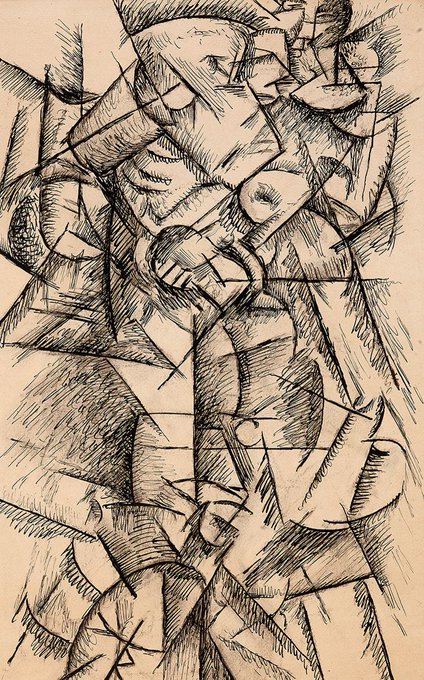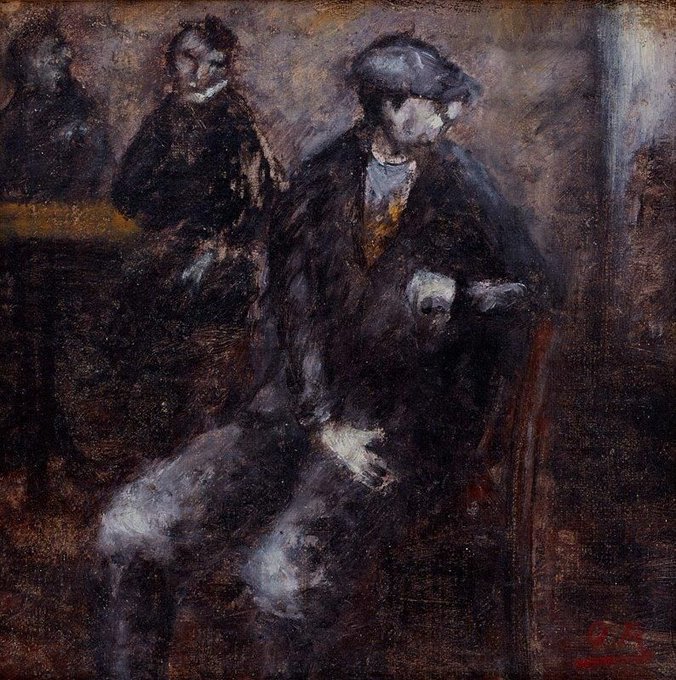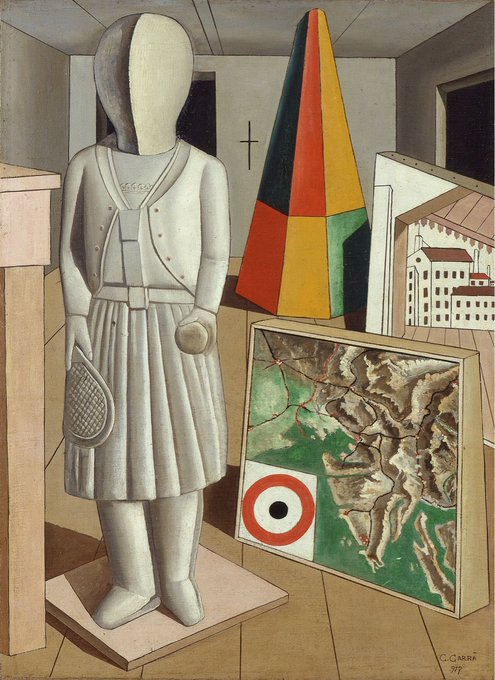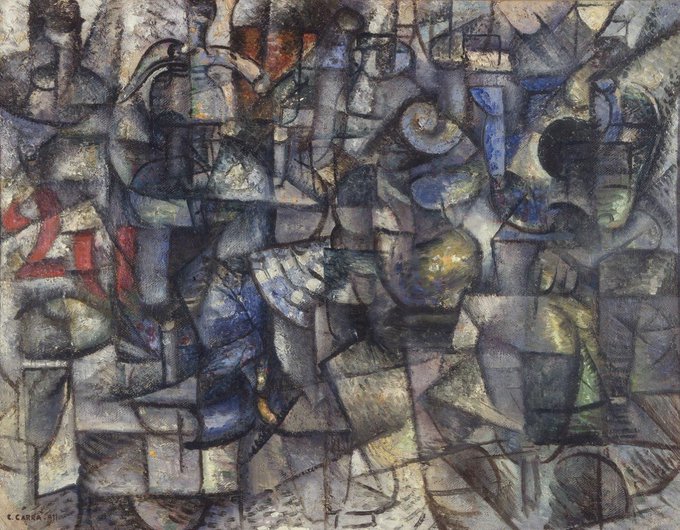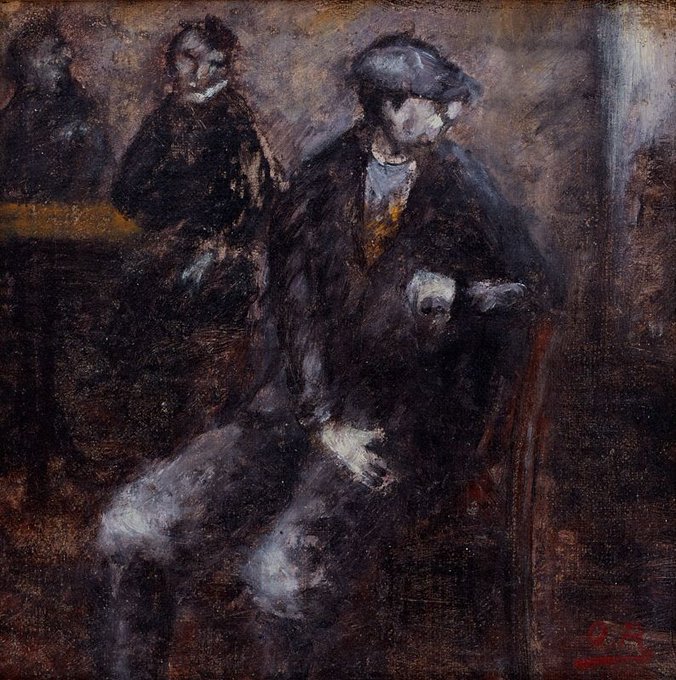Carlo Carrà died #onthisday in 1966.
In 1911, Carrà’s direct exposure to Cubism during a visit to Paris had a profound effect on the work of this artistic magpie, as illustrated by drawings such as Boxer (currently on display in Gallery 4) and Synthesis of a Café Concert.
Represented in the Estorick Collection by only this small canvas Man Waiting, Ottone Rosai was one of the stars of our recent exhibition A New Figurative Art.
Man Waiting is the only painting by Rosai in a public collection in the UK.
Carlo Carrà was born in Piedmont #onthisday in 1881.
In 1911, Carrà’s direct exposure to Cubism during a visit to Paris had a profound effect on the work of this artistic magpie, as illustrated by drawings such as Synthesis of a Café Concert.
Can you see the dancing notes? 🎶
Ardengo Soffici died #onthisday in 1964. Although he stressed the fundamental importance of modern subject matter to Futurist painting, his own works addressed curiously neutral imagery such as landscapes, still life compositions and figure studies.
https://t.co/6rcm0lgrCa
Closing tomorrow - The Enchanted Room: Modern Works from the Pinacoteca di Brera.
https://t.co/Z5x6hqdran
In the history of 20th-century figurative art, the Italian painter Giorgio Morandi stands out as a highly individual artist who captured the simple beauty of light on forms through deft brushwork and the use of subtle coloration. G. Morandi, Still Life, 1929
Just three weekends left before #TheEnchantedRoom ends!
https://t.co/lopG7SlbDo
The works on display in the Enchanted Room provide an overview of Carrà's stylistic development. The Rhythms of Objects, encompasses the formal austerity of the Cubist aesthetic in combination with Futurist themes of movement.
Tickets&Info on https://t.co/Z5x6hqdran
In Rythms of Objects (1911) by Carlo Carrà the formal austerity of the Cubist aesthetic is combined with Futurist themes of movement, simultaneity and the interpenetration of planes.
Born in Florence, Rosai was educated at the city’s Academy of Fine Arts. In 1913, his work was seen by the Futurists; according to Rosai, “They invited me to join them and from that very day I became a militant Futurist.”
Ottone Rosai, Man Waiting, 1919


